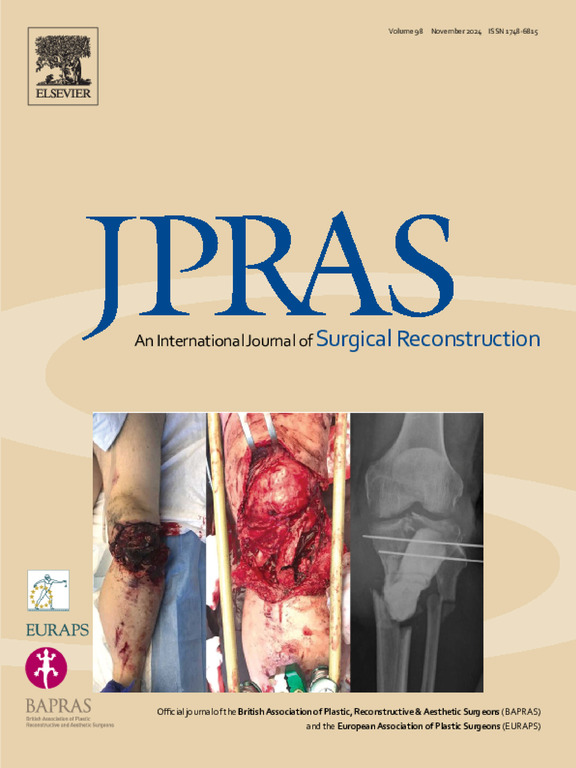性别确认阴道成形术中扩张困难的预测因素。
IF 2
3区 医学
Q2 SURGERY
Journal of Plastic Reconstructive and Aesthetic Surgery
Pub Date : 2025-02-01
DOI:10.1016/j.bjps.2024.11.042
引用次数: 0
摘要
性别确认阴道成形术术后护理的一个必要组成部分是新阴道管的扩张。扩张困难可引起患者疼痛和困扰,往往降低依从性,导致部分或完全关闭新阴道管。本研究旨在评估导致患者新阴道扩张困难的社会人口学、手术和合并症特征。对2019年6月至2023年7月期间接受性别确认阴道成形术的患者进行了回顾性研究。主要结果是在任何原因的随访期间报告的持续扩张困难。采用单因素和多因素分析比较各组的特征和结果。统计学意义设为p本文章由计算机程序翻译,如有差异,请以英文原文为准。
Predictors of dilation difficulty in gender-affirming vaginoplasty
A necessary component of postoperative care in gender-affirming vaginoplasty is the dilation of the neovaginal canal. Difficulty with dilation can cause patient pain and distress, often decreasing compliance and leading to partial or complete closure of the neovaginal canal. This study sought to evaluate the sociodemographic, operative, and comorbid characteristics that contribute to patient difficulty with neovaginal dilation. A retrospective review of patients undergoing gender-affirming vaginoplasty between June 2019 and July 2023 was carried out. The primary outcome was consistent dilation difficulty reported during the follow-up clinic visits for any reason. Univariate and multivariate analyses were used to compare characteristics and outcomes of each group. Statistical significance was set at p < 0.05. In total, 614 patients were included in the study, 506 (82.5%) patients had no dilation difficulty and 108 (17.5%) had dilation difficulty. Medicare insurance status (p = 0.007), unemployment (p < 0.001), hyperlipidemia (p = 0.019), HIV (p < 0.001), psychiatric diagnosis besides gender dysphoria (p = 0.048), and primary peritoneal vaginoplasty (p = 0.019) were associated with postoperative dilation difficulty. Multiple logistic regression revealed higher odds of dilation difficulty in patients who are unemployed (OR 2.740, 95% CI 1.587–4.732, p < 0.001), have HIV (OR 2.588, 95% CI 1.290–5.190, p = 0.007), have a psychiatric diagnosis besides gender dysphoria (OR 1.606, 95% CI 1.001–2.577, p = 0.049), or received a primary peritoneal graft (OR 3.202, 95% CI 1.212–8.460, p = 0.019). The risk of postoperative dilation difficulty may be associated with multiple aspects of the care spectrum. Understanding these risks and continued encouragement of dilation is critical to optimizing patient outcomes and dilation success.
求助全文
通过发布文献求助,成功后即可免费获取论文全文。
去求助
来源期刊
CiteScore
3.10
自引率
11.10%
发文量
578
审稿时长
3.5 months
期刊介绍:
JPRAS An International Journal of Surgical Reconstruction is one of the world''s leading international journals, covering all the reconstructive and aesthetic aspects of plastic surgery.
The journal presents the latest surgical procedures with audit and outcome studies of new and established techniques in plastic surgery including: cleft lip and palate and other heads and neck surgery, hand surgery, lower limb trauma, burns, skin cancer, breast surgery and aesthetic surgery.

 求助内容:
求助内容: 应助结果提醒方式:
应助结果提醒方式:


